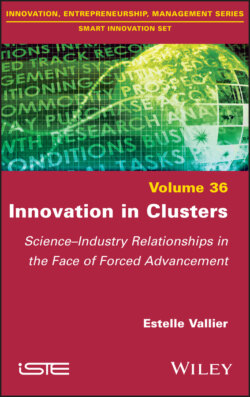Читать книгу Innovation in Clusters - Estelle Vallier - Страница 30
1.3.2. The relational logic essential to geographical proximity
ОглавлениеSince the beginning of the 1990s, the economics of proximity (Bellet et al. 1993, 1998; Rallet and Torre 1995; Gilly and Torre 2000; Dupuy and Burmeister 2003; Pecqueur and Zimmermann 2004; Torre and Filippi 2005) has sought to take account of the conditions necessary for the coordination of agents (Talbot and Kirat 2005, p. 9). This question has been the subject of research concerning the links, or otherwise, between geographical proximity and social interactions. The abundant work has led to “the emergence of a kind of specific scientific community, with its own conferences and regular publications” (Bouba-Olga and Grossetti 2010, p. 2). In the course of their work, this school has managed to define a certain number of types of proximity, but a concern for readability has led its authors to restrict the canonical forms of proximity to two (ibid., p. 4). Thus, they agree to say that alongside geographical proximity is organized proximity. The former is doubly relative: on the one hand, it is relative to the means of transport and, on the other hand, it proceeds from the judgment of the individuals on the distance that separates them from other individuals or groups. The latter is not geographical, but relational in nature and is based on an organization’s ability to have its members interact (Talbot and Kirat 2005). Beyond this vertical distinction, the authors have made a horizontal division within organized proximity between the logic of belonging (to the same structure, for example) and the logic of similarity (sharing common representations and a common system of values). The authors stress that the two proximities can be combined and thus facilitate knowledge sharing. Nevertheless, geographical proximity does not guarantee organized proximity, the absence of which translates into an extreme weakness of cooperative relations, solidarity links or shared representations (Torre and Zuindeau 2012, p. 354). Moreover, some authors postulate that spatial proximity may lead to negative externalities of agglomeration, such as industrial espionage, unbridled competition, local market saturation or the poaching of qualified personnel (Depret and Hamdouch 2009, p. 32).
Given the limits of geographical proximity (negative externality, absence of spontaneous links, etc.), other relational logics between scientific and industrial actors have been studied. Estades, Joly and Mangematin propose three relational logics (Estades et al. 1996): proximity, club and market. These three logics were later completed by Grossetti and Bès (2001), who then distinguished a “network logic” in which the contact results from a relational chain linking the two officials responsible for the collaboration. Most often, this relational chain has its roots in the university courses studied by the two officials. This network logic partially challenges the logic of proximity established by Estades, Joly and Mangematin, insofar as, for Grossetti and Bès, personal networks do not only stem from local proximity. They also identify “institutional logic”, which is almost similar to the “club logic” of Estades, Joly and Mangematin, since both refer to the intervention of an external body, most of the time governmental, which provokes interactions between enterprises and laboratories. Finally, the two studies establish a third similar logic: that of the market. Estades, Joly and Mangematin consider that partnerships of this type are often the result of the will of industrialists who need solutions provided by researchers, whereas Grossetti and Bès consider that both scientific and economic actors can lead this market logic (Grossetti and Bès 2003, p. 343).
Ten years after the Grossetti and Bès study, Julien Barrier also identifies three major patterns of academic and industrial interaction (Barrier 2014). For him, the relationship is most often created on the initiative of industrialists who seek to: (1) enter into collaboration with researchers in order to acquire specific knowledge and know-how in a well-defined field, (2) optimize an existing technology that enables researchers to test theoretical models in an industrial context or (3) jointly explore, upstream of the development or application phase, concepts or research objects that are beneficial to the scientific production of academic researchers (Barrier 2014, p. 63). Geographical proximity is therefore gradually being supplemented by analyses that focus on other types of proximity and relational logic. Alongside these proximities, the sharing of a common social capital, which is decisive for establishing links, has also been the subject of several works.
